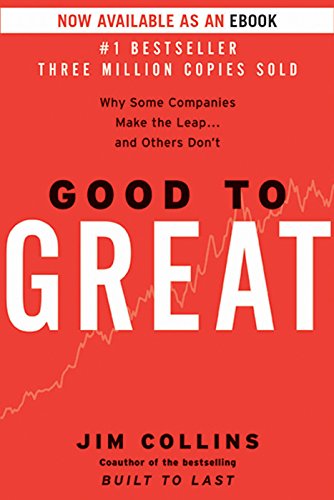

This article is an excerpt from the Shortform summary of "Good to Great" by Jim Collins. Shortform has the world's best summaries of books you should be reading.
Like this article? Sign up for a free trial here .
Are you a fox or a hedgehog? If you manage a business, you probably want to be a hedgehog (or at least act like one).
People can be divided into foxes and hedgehogs: Foxes know many things and engage with a complex world on its own terms; hedgehogs know one big thing and subsume the world’s complexity to a single, simple, unifying idea. We’ll cover why hedgehogs make the best leaders, how to act like a hedgehog if it doesn’t come naturally to you, and how to answer the question, Are you a fox or a hedgehog?
Answering: “Are you a fox or a hedgehog?”
Are you a fox or a hedgehog? Where does this distinction come from? This division is based on the parable of the fox and the hedgehog: whereas the clever fox is forever coming up with new ways to attack the hedgehog, the hedgehog always defends itself the same effective way: by curling up into an untouchable ball of spikes.
Good-to-great leaders are hedgehogs—they develop a simple concept in response to the facts of reality and pursue that concept vigorously and with singular focus. If you’re a leader, hopefully you know your answer to Are you a fox or a hedgehog?
Qualities of Hedgehogs
Consider the thinkers with the most long-lasting influence: Adam Smith, Darwin, Marx, Freud, Einstein—each took the seeming chaos of the world and boiled it down to a single, easy-to-understand concept. These leaders were hedgehogs. Are you a fox or a hedgehog?
Like these thinkers, good-to-great leaders look at a complex world and produce simple, elegant concepts to filter out noise and provide a steady guide for their companies.
Develop Your Hedgehog Concept
Even if your answer to the question Are you a fox or a hedgehog? is “fox,” you can still create a hedgehog concept. At a glance, a Hedgehog Concept might just seem like sound strategy or sharp business sense.
But Collins et al. discovered that good-to-great companies’ guiding concepts were driven by research and understanding along three axes.
Imagine a Venn diagram composed of three circles:
Circle #1: What can I do better than anyone else in the world?
Rather than focus on “core competences,” good-to-great companies homed in on an area of their business they led (or could lead) the world in. It’s important to focus on your strengths regardless of your answer to the question, Are you a fox or a hedgehog?
For example, by the 1960s, Abbott Labs hadn’t invested enough in R&D to compete with major pharma companies like Merck. So, even though Abbott had focused on pharmaceuticals for its entire existence, CEO George Cain decided to move the company into the areas of hospital nutritional products and diagnostic devices, areas with which the company had flirted and in which opportunity was significant. Abbott eventually became leading company in both these areas.
The takeaway is this: If you can’t be the best in the world in a particular area, even if it’s your core business, then it can’t be part of your Hedgehog Concept. It’s equally useful to define what you cannot be the best in the world at, and to avoid that sector.
Circle #2: What’s my economic engine?
It might be tempting to assume that the good-to-great companies happened to be operating in booming industries at the transition point—but, in fact, only one of the good-to-great companies was in a high-return industry. (Collins et al. ranked each of the good-to-great companies’ industries by averaging returns for the top companies within those industries.)
The reason the good-to-great companies were able to excel regardless of industry was their sharp insight into the fundamental economics of what aspect of their business would drive profits. They formulated a single “economic denominator,” defined as a ratio such as “profit per X,” and aligned their strategy around that ratio. The challenge was to define the correct X to produce the correct strategy. Even if you answer “fox” to the question Are you a fox or a hedgehog?, it’s crucial to know your place in your industry.
Walgreens, knowing that it wanted to maximize convenience, also knew that profit per store would likely diminish (because more convenience = more stores in a smaller area = less profit per store). So they transformed their thinking: They optimized their stores for profit per customer visit, thereby aligning their economic denominator with what they could do better than anyone else in the world—build convenient drugstores.
Circle #3: What is my most profound passion?
Although good-to-great companies certainly wanted to maximize profits, they weren’t simply looking for golden opportunities. Rather, they pursued courses of action that inspired their people. They only chose opportunities that their team could get passionate about.
For example, while its competitors ran a race to the bottom by manufacturing ever-cheaper disposable razors, Gillette went in the opposite direction, designing and producing sophisticated shaving systems that its technicians and executives could get excited about.
Are you a fox or a hedgehog? If you’re a hedgehog, you have some of the qualities that make you a great leader. If you’re a fox, you can still act like a hedgehog.
———End of Preview———

Like what you just read? Read the rest of the world's best summary of "Good to Great" at Shortform . Learn the book's critical concepts in 20 minutes or less .
Here's what you'll find in our full Good to Great summary :
- The 3 key attributes of Great companies
- Why it's better to focus on your one core strength than get spread thin
- How to build a virtuous cycle, or flywheel effect, in your business






